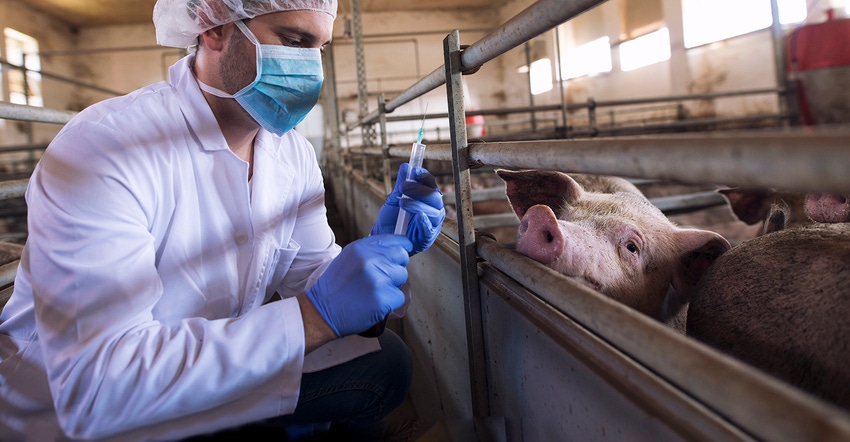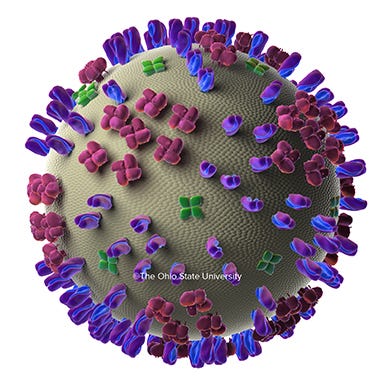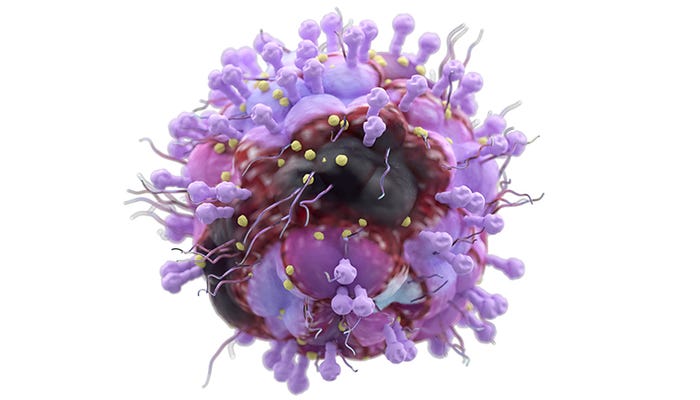January 1, 2022

Sponsored Content
Veterinarians at Ohio State conduct research on influenza and other viruses. Their work helps unlock the secrets of viruses that infect animals and people. They study transmission of disease within the same species and to other species, including from animals to people, and from people to animals.
“It seems obvious, but viruses differ from each other,” explained Andrew Bowman, DVM, swine influenza specialist, associate professor in the College of Veterinary Medicine at The Ohio State University, and director of the Animal Influenza Ecology and Epidemiology Research Program (AIEERP).

Some viruses have an outer wrapping—a lipid envelope (layer of fat). They may remain viable on surfaces like doorknobs, gates and equipment. The enveloped viruses found on surfaces can be stopped from spreading disease through simple handwashing. The AIEERP provides outreach activities for kids to help them understand why handwashing is so important.
“We use an experiment with foil balls,” said Jacqueline Nolting, PhD, laboratory manager for the AIEERP. “The kids coat one with butter and roll it in sprinkles.”
The sprinkles represent the proteins on the virus that help it to enter cells to cause disease. Once coated, the foil balls are then immersed in a solution of warm water and Dawn® liquid dish soap. Because soap breaks down fats, the sprinkles wash off the buttered foil ball.
This demonstrates the power of handwashing. Soap breaks down the protective coating around the virus, which makes it unable to infect its target. The water washes it away. Alcohol hand sanitizers can cause the envelope to burst also.
“This experiment also demonstrates the need for other methods to help destroy different types of viruses,” said Nolting. Viruses without a lipid envelope require more than soap to prevent them from infecting another host, as do enveloped viruses that can spread through the air.
“Vaccinations are an important tool to prevent serious illness caused by the spread of viruses,” said Bowman.
Vaccines teach the immune system to recognize threats and fight them with antibodies and other cells. Some vaccines use inactive viruses to create an immune response. Other vaccines use live-attenuated viruses, which are treated to prevent the actual illness caused by the virus. Vaccines for smallpox (in humans) and rinderpest (in cattle) have been so successful those diseases have been eradicated.
Some diseases, such as chicken pox, require only a single vaccination to prevent disease. Others, like the measles, require two vaccinations to achieve immunity. Some viruses—like influenza—mutate so rapidly that the vaccines vary from year to year, or every few years, to try to match which viral strain is circulating that year. Over the past 100 years, both swine and birds have been known to carry flu viruses that mutate. Infections circulate in the animal populations and then a mutation will allow the virus to infect humans.

Coronaviruses are similar to influenza viruses. They are enveloped viruses that can be spread on surfaces and also transmitted in the air. While coronaviruses haven’t been studied in humans as extensively as influenza, veterinarians have studied different types of coronaviruses in animals since the 1960s. For example, Porcine Epidemic Diarrhea Virus (PEDv) is a coronavirus that spread through the US swine herd in 2013, killing an estimated 10% of the nation’s pigs in a short period of time.

Some human coronaviruses cause common colds. Newly emerging coronaviruses such as SARS-CoV-2, which causes COVID-19, can cause severe illness because people don’t have immunity to the new virus type.
The efforts to create an effective vaccine for COVID-19 were supported by more than 100 years of research investigating viruses and understanding vaccines. One type of vaccine now available for COVID-19 uses messenger RNA or mRNA. Researchers have been studying mRNA for decades. These vaccines work by telling cells to create a small piece of harmless protein from the SARS-CoV-2 virus. Your body learns to recognize this protein as an invader. This causes the immune system to produce antibodies and other immune cells that fight COVID-19.
The vaccines prevent serious illness. Unless more research results in a better understanding of coronaviruses, they will not be eradicated but can be made survivable. Vaccines remain our best defense; our best tool in the struggle to remain healthy.
“SARS-CoV-2 is here to stay,” said Bowman. “Vaccines are currently our best weapon in the fight.”
References:
D. Schoeman & B. Fielding, “Coronavirus envelope protein: current knowledge,”
Virology Journal volume 16, Article number: 69 (2019)
virologyj.biomedcentral.com/articles/10.1186/s12985-019-1182-0
Scott Kenney, "mRNA Vaccines: The Next Generation Tool to Fight Infections," The Ohio State University, OSU Extension Fact Sheet ohioline.osu.edu/factsheet/vme-34
About the Author(s)
You May Also Like




